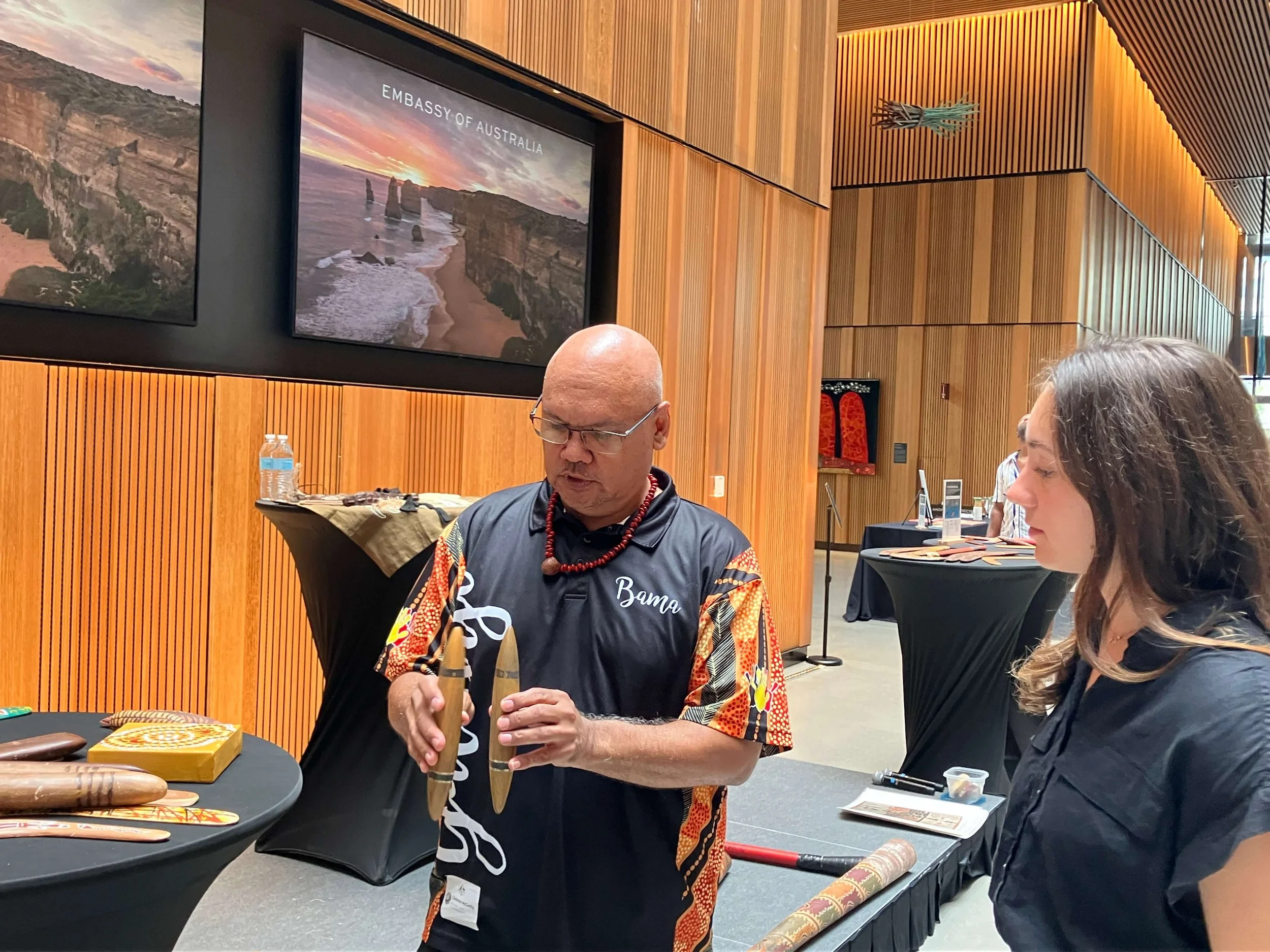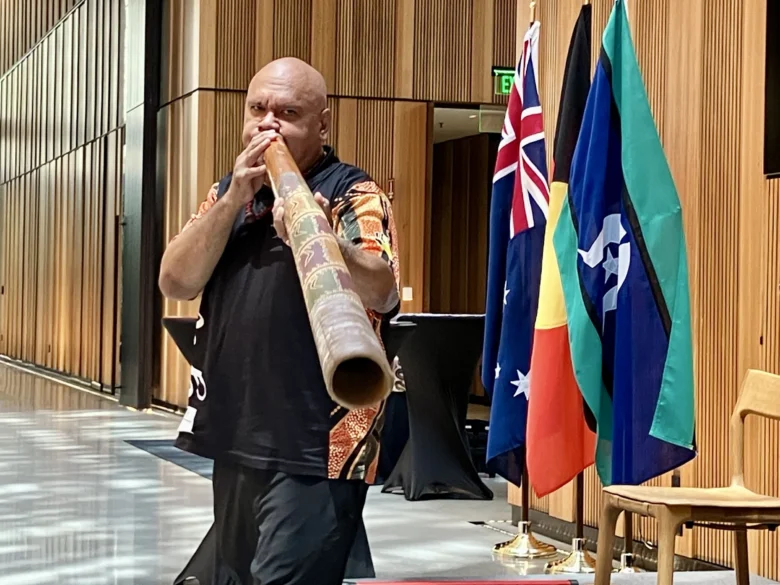The Embassy of Australia hosted educator, performer, and artist Cameron McCarthy on Friday, July 11, for two workshops celebrating Indigenous Australian culture. With just under 20 participants, the event offered an intimate setting centered on storytelling—particularly through Indigenous symbols in artwork and traditional sounds in music. McCarthy moved seamlessly from performance and demonstration into a small group discussion.
He began by sharing his background in Australia and his current role teaching middle school social studies in New York, where he has lived since the early 2000s. A lifelong performer of Indigenous Australian dance and didgeridoo, McCarthy’s family originates from Queensland in northern Australia. He brought several instruments from the region and opened the hour-long session with the deep tones of the didgeridoo.
In one sweeping gesture, he played the didgeridoo while pointing it toward each person in the room. He later noted that beeswax is applied to the mouthpiece to prevent splinters and create an airtight seal for better sound projection. He demonstrated how the instrument mimics animal sounds—such as the kookaburra and kangaroo—which are used in storytelling across Indigenous cultures.
McCarthy then introduced tapping sticks—two small, rounded sticks that produce rhythmic sounds when struck together. Different types of wood create different tones, he explained, just as the length of a didgeridoo affects its pitch: the longer the instrument, the deeper the sound.

The workshop also explored Aboriginal Australian art symbols. Handouts featured diagrams of common markings and their meanings. McCarthy highlighted the upside-down “U” shape, which signifies a seated person, and explained how gender is denoted: a spear next to the male figure, a digging tool beside the female.
After thirty minutes of demonstrating the instruments and their cultural significance, the group split into two. Adults and children alike used the brightly-colored markers and paper provided to explore their creativity in connection with Indigenous Australian traditions, while McCarthy answered questions from the remaining attendees.
Many attendees asked about traditional dances, which McCarthy continues to perform. To a small group gathered around him, he demonstrated styles including “shake a leg” and a desert-region shuffle, where dancers kick up dirt by moving their feet side to side.
Using a map of Indigenous Australia, McCarthy traced his family’s lineage, explaining his descent from the Kuku-Yalanji people and additional roots in the Yidinjdji and Mbabaram communities. He speaks Kuku-Yalanji and noted that shared vocabulary across dialects allows him to also understand Yidinjdji and Djabuganjdji.
At the end of the session, McCarthy showed several boomerangs he had brought—each made of smoothed wood and painted with colorful Indigenous symbols. He explained the aerodynamics: boomerangs rounded on both sides fly straight, while those with one flat and one curved side return to the thrower. He closed with a series of playful didgeridoo tricks, including speaking through the instrument.
McCarthy’s presentation offered a vivid introduction to the music, dance, and storytelling traditions of Indigenous Australian culture. His attention to detail and approachable style created a relaxed, conversational space for cultural learning in the Embassy of Australia’s LEED-certified building on Scott Circle.
